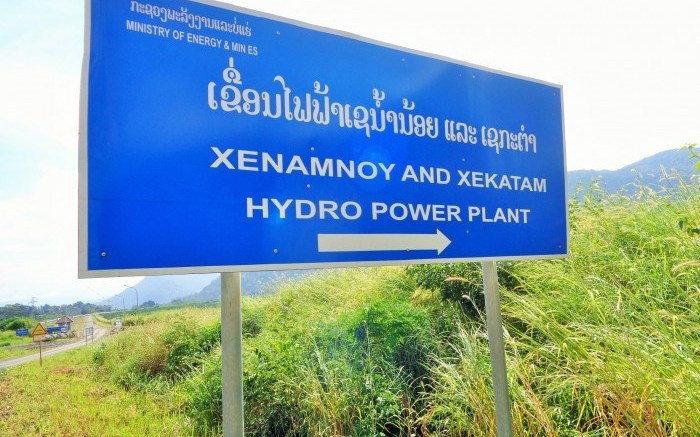
China: Dam export on “One Belt, One Road”: International Rivers
China Dam Exports:
China is the “dam export kingdom” with the largest number of dam constructions in the world.
Environmental Conservation Organization: International Rivers
According to 2014 data
The total number of dams built by China abroad is 333.
More than half of them are in Asia (57%),
Especially concentrated in Southeast Asia (38%),
Next is Africa (26%),
Furthermore, South America (8%),
In Europe (7%, mainly Eastern Europe)
We are advancing.“Dam made in China” in Southeast Asia:
Most Myanmar (32%)
Laos (22%),
Philippines (13%),
Malaysia (11%),
Vietnam and Cambodia (8% each),
In Indonesia and Brunei (2% each)
It is being built.“One Belt, One Road” Strategy:
80% of the dams constructed by China are large dams.
Since 2000, OECD countries have withdrawn from dam construction.
On the other hand, since 2014, China has entered the market with a “One Belt, One Road” strategy.
However, this “dam export” is not just financial support in good faith.Investment purpose in China:
The purpose of China’s investment in Asia and Africa is
In exchange for helping economic development
To secure resources
To build a military base.
It is directly linked to China’s political interests.Crude random dam construction:
In addition, it is not uncommon to construct crude and random dams without considering the development needs of the partner country.
Ecuador in South America:
The Cocaco de Sinclair Dam built by China in 2016.
In just two years, 7,600 cracks occurred.
In addition, the vice president and bureaucrats at the time of the contract were arrested one after another on suspicion of corruption.Uzbekistan in Central Asia:
In May of this year, a dam in the Sardova Reservoir in the east broke due to a storm.
According to Taiwanese reports, allegations of corruption over Chinese funds have also been accused.Merowe Dam in Sudan:
A huge dam built by China in 2009.
Located upstream of the Aswan High Dam in Egypt.
Since it was completed in just five years, there are concerns about safety issues.Buoy Dam in Ghana:
China has undertaken the construction of a buoy dam with a power generation capacity of 400 megawatts.
However, the flow of the river has changed, and there are concerns about water shortages in the lower reaches.Chinese stance:
China generally says that the harmful effects of dam construction should be resolved by the partner country itself.
He is also indifferent to local environmental conservation.
Environmental destruction of the Mekong River:
The most significant environmental destruction is the Mekong River, which flows through Southeast Asia.
A first-class international river that has a water source on the Tibetan Plateau and flows from China to the South China Sea via Myanmar, Laos, Thailand, Cambodia, and Vietnam.
It is a valuable water resource that supports the lives of 60 million people in the basin.
Water shortage in the lower Mekong River:
As a result, a serious water shortage occurred in the lower reaches of the Mekong River last summer.
To prepare for the drought in July
The amount of water discharged from Jinghong Dam has been reduced by half.
In addition, the Saiyaburi Dam in Laos has also started a test run.
The water level of the Mekong River has dropped to the lowest level in the last 100 years.China’s overseas dam construction / problems are:
Inflicting heavy debt on emerging economies around the world
Promoting local environmental destruction and local “water conflict”,Newsweek Japan Version | Toyo Keizai Online
https://toyokeizai.net/articles/-/380742?display=b
Viewpoint China’s dam frenzy in Burma (Myanmar)
China’s frenzied dam-building
hit a wall recently in Burma (Myanmar),
where the government’s bold decision to halt a controversial Chinese-led dam projecthelped to ease the path to the first visit by a U.S. secretary of state to that country in more than a half-century.
https://koreajoongangdaily.joins.com/2011/12/07/columns/Viewpoint-Chinas-dam-frenzy/2945236.html
Dam Displacement Destroys Livelihoods in Guinea:
16,000 People Losing Land for China-Backed Souapiti Project
The Guinean government’s failure to provide adequate land, compensation,
and other forms of support to those displaced for the Souapiti hydroelectric dam
has devastated the livelihoods and food security of thousands of people, Human Rights Watch said in a report released today.
The dam is part of the Belt and Road Initiative (BRI), the Chinese government’s trillion-dollar investment in infrastructure across some 70 countries,
UN calls for firms behind Lao dam collapse to pay as 7,000 survivors await compensation